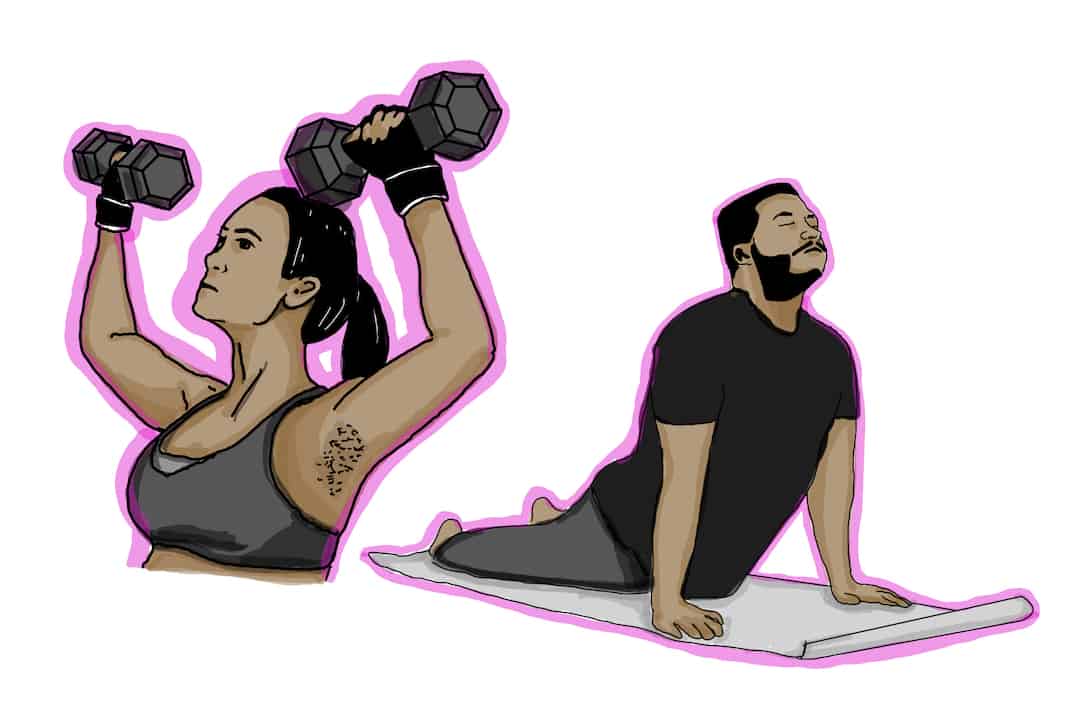As COVID-19 cases have begun to rise, the Ontario government recently decided to close indoor fitness centres in regions that are peaking — York, Toronto, Peel, and Ottawa — within the province. This has left gyms, for the second time this year, scrambling to find ways to serve gym-goers. Many gyms have begun to offer outdoor workouts, often in the parking lots of their facilities.
Many students have already begun to adjust to this new normal, especially in the wake of the University of Toronto closing down gyms in recent weeks in response to a spike in cases. They have the option of either home fitness or grabbing a local subscription to a gym that now offers an outdoor studio experience.
As the Varsity Blues teams have already opted to continue their strength and conditioning training outdoors, it might be worth thinking about the logistics of this move. As team trainers make do with a limited amount of portable gym equipment and the little outdoor training space around Goldring and the Varsity Centre, one has to wonder if this adaptation really is a solution. Do outdoor spaces really present a solution for the gym-going public? How long can we last as the weather gets colder by the minute?
Firstly, what are “outdoor gyms?” Quite simply, they’re fitness studios that are outside, equipped with most if not all of the equipment one would find in an actual gym. Sometimes, these gyms are under a tent to protect workout warriors from the elements, and sometimes they are permanent institutions.
To adapt to COVID-19, these outdoor gyms have instituted physical distancing measures and provided adequate sanitation supplies.
The case for the great outdoors
It’s important to recognize that outdoor exercise does have some major pros, especially when analyzing the spread of COVID-19 that can occur in indoor fitness studios. For example, the SPINCO spin studio in Hamilton had an outbreak after an indoor class, leading to 80 cases — 50 of which were from primary exposure to employees and patrons — after an asymptomatic patron took part in a session.
Potential transmission of the virus can occur via airborne droplets, which can remain in circulation for long periods of time. The increased rate of exhalation that occurs during exercise can exacerbate this despite efforts to sanitize and physically distance, and indoor gyms can often lack the required ventilation to circumvent this form of transmission. Thus, outdoor gyms can potentially prevent the spread of the virus more effectively than indoor settings.
And the case against outdoor gyms
While outdoor gyms do provide a valuable service in these uncertain times, they do have a major flaw. The inevitable dip in temperature that comes around wintertime means that few can feasibly expect to be able to exercise in mid-Novemberʼs bone-chilling weather.
Especially when it begins to snow, outdoor gyms will be forced to pack up. No matter how much Canadians pride themselves on their ability to bear the cold, I doubt anyone is deadlifting in the middle of a blizzard. I know I will be foregoing the outdoor dumbbell workouts come snowfall.
This realization can have major consequences for gym owners — while things had just started to look up, a second lockdown could spell financial ruin. For those gyms, outdoor setups are temporary solutions to a problem that feels more permanent every day.
Gym-goers and owners, including here at U of T, alike should start focusing on more sustainable solutions for this pandemic that seems to be going nowhere fast. Their focus should be on investing more in their online and remote exercise options.


